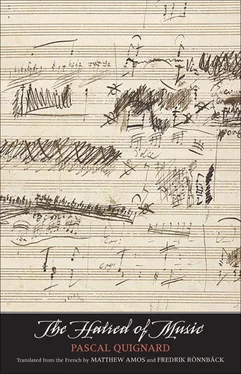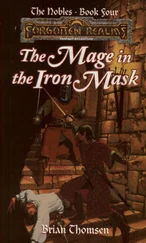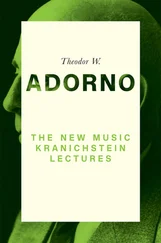To the ears of the servant, language betrays Peter in at least three ways: by his accent, by his Galilean morphological markers, by the alteration of his voice due to the fear Peter experiences before the tarabust of the questions he is asked by the servant. Peter’s pavor , hooked by the cock’s crow, constitutes a rough acoustic jolt that catches in its net an acoustic fish older than the fisherman himself, a face always older than light, and joins them in tears.

Every child’s face is older than the light that illuminates it. The tears of the newborn.

I will add a correction by Saint Jerome.
Mark’s text is odd: “And just then, for the second time ( ek deuterou ) a cock crowed. And Peter ( Petros ) remembered what Jesus ( Ièsous ) had told him: ‘Before the cock crows twice ( dis ), you will betray me thrice ( tris ).’ And he broke down in tears.”
Jerome revised Mark’s text. He unified it according to the lessons of the other Gospels. Jerome, at the end of the fourth century (so fascinated by classical Roman culture that he confessed as a mortal sin that he would sometimes dream at night that he took pleasure in reading ancient pagan books), is immediately sensitive to these three stages worthy of fables and corrects them while translating.

1. Jerome’s correction is entirely justified. Saint Mark missed the first crow that prepares the emotion. A musician, a novelist would not have left it out, due to the pathetic effect that this first call seems to hail in the space of the text, without it yet being heard by the hero.
2. Jerome’s correction is not at all justified. There is in this already repeated crow, which does not appear for the first time until the second, which produces a triple betrayal, a moving depth that I cannot clearly explain. (For all that I feel, I have an incredible
esprit d’escalier
This is the only gift the
fata
bestowed upon me. Certain emotions come to me with a delay of several hours, a year, two years, seven years, twenty years, thirty years. The injury that Ulysses suffered to the knee, during the wild boar chase with Autolycus’s sons, when the weather is humid, I am only now starting to feel it.)

The texts of the various Gospels are not from the first century Anno Domini. But in the same historical epoch, although under the reign of Nero, the knight Petronius wrote another scene about a cock’s crow. It is not impossible that the first authors of the Gospels , or those who rewrote and altered them, might have remembered this. This page, which we owe to the completely literary genius of Gaius Petronius Arbiter, a few weeks before he took his own life, constitutes fragment LXXIII of the Satyricon . It is Trimalchio’s banquet. The hour is very late. Trimalchio orders another banquet in order to joyfully greet the day. He adds that this banquet will be dedicated to the celebration of the first beard of one of his young slave lovers.
Haec dicente eo gallus gallinaceus cantavit. Qua voce confusus Trimalchio … “As he said these words, a cock crowed …” Trimalchio is immediately troubled by the crow, confusus . The scene then progresses extremely rapidly: 1. Trimalchio orders a libation of wine on the table. 2. Trimalchio has the oil lamp doused to prevent the risk of fire. 3. Trimalchio shifts his ring from his left hand to his right. 4. Trimalchio declares: Non sine causa hic bucinus signum dedit … “It is not without reason that the trumpet sounded its signal. There is a fire somewhere. A man draws his last breath in the neighborhood. Far from us! Far from us! Whoever brings me the prophet of misfortune will have his reward.” 5. No sooner has he spoken (faster than words, dicto citius ) than the cock is brought in. 6. Trimalchio orders that it be sacrificed immediately (it is placed in the pan). 7. The cock is eaten, the sacrifice is consumed, the sign devoured, and the curse kept at bay (Trimalchio ate the sinister voice).
These two literary scenes associating action with a cock’s crowing in the yard constitute a strange set of mirrors. These mirrored reflections, this echo of Rome in Jerusalem, this little diptych between Trimalchio in his palace and Petrus in Annas’s courtyard, this symmetry is all the more fascinating since a somewhat erudite imagination, transposing with some difficulty the banquet to the reign of Tiberius, could try to anchor it historically. One could speculate that it is the same year. One could claim that it is the same day. One could suppose that it is the same hour. One could perhaps say that it is the same cock.

Rainer Maria Rilke wrote that memories really become memories only when they leave the space of the head and separate themselves from the images that have metamorphosed them as well as from the appearance of the words that endeavor to keep them at a distance. That the beginning of a memory coincided with the effort made to forget it, by the effort to bury it. The memory would then find the strength to return to us, still dripping with water from the river of oblivion, without words, without dreams, without icons, in the form of gestures, manias, sordid movements, courtyards, cooked meals, sudden urges to vomit, faints, tarabusts, and inexplicable terrors. Losing name and meaning, it arises like the tears in Peter at the cock’s third crow, in the beginning of the month of April, at daybreak, abruptly standing far from the atrium and the brazier, in the corner of the door to the house of Caiaphas’s father-in-law. Peter’s real memory is the salty water of the tears, the shaking back, the cold of the emerging day, the sniffling wet nose. The nose of a fish in the atmospheric air. The “Last Supper” of this “rock” of the second name is water and salt. Saint Peter’s meal, as opposed to Trimalchio’s banquet, is his tears. In Augustine, such is the beatific vision: “Day and night I eat the bread of my tears.” ( Enarratio in Psalmum CIII .) Peter forever joined daybreak to tears. La Tour curiously shows: vine shoots in embers, a plump cock. Georges de La Tour is closer to Trimalchio. In La Tour, Saint Peter’s body is curiously, not upright, the body of a grown man looking down on the servant, fleeing her, but that of an old man, crouching, squat, the size of a child, chin on his knees, like the dead that humans in the Paleolithic age tied up with reindeer nerves, in the curled-up position of a fetus, hoping for a second birth in the shadow of the hide of the totemic animal.

The tears of Saint Peter, despite the effort I make to visualize a more Roman scene, I can only imagine it in the Baroque style of Henry IV or Louis XIII. A gray courtyard in the Louvre in winter, or a rainy courtyard in Rouen. Or a damp, freezing courtyard in La Tour’s Lunéville.
In 1624 Georges de La Tour sold Saint Peter’s tears for 650 francs. The Cleveland Museum of Art keeps tears of Saint Peter that date from 1645. The cock with the round eye of Mesopotamian gods and the old vine shoots that surround the martyred apostle make up the very few depictions of nature that La Tour consented to paint (human beings are not counted as depictions of nature. Cocks that crow and vine shoots that burn fall under the rubric of still lifes). At the end of the previous century, in Malherbe’s Tears of Saint Peter , language abandoned the nocturnal word. If shame is born with this twilight of the night that is daybreak, then it is silence that comes with day:
Читать дальше













